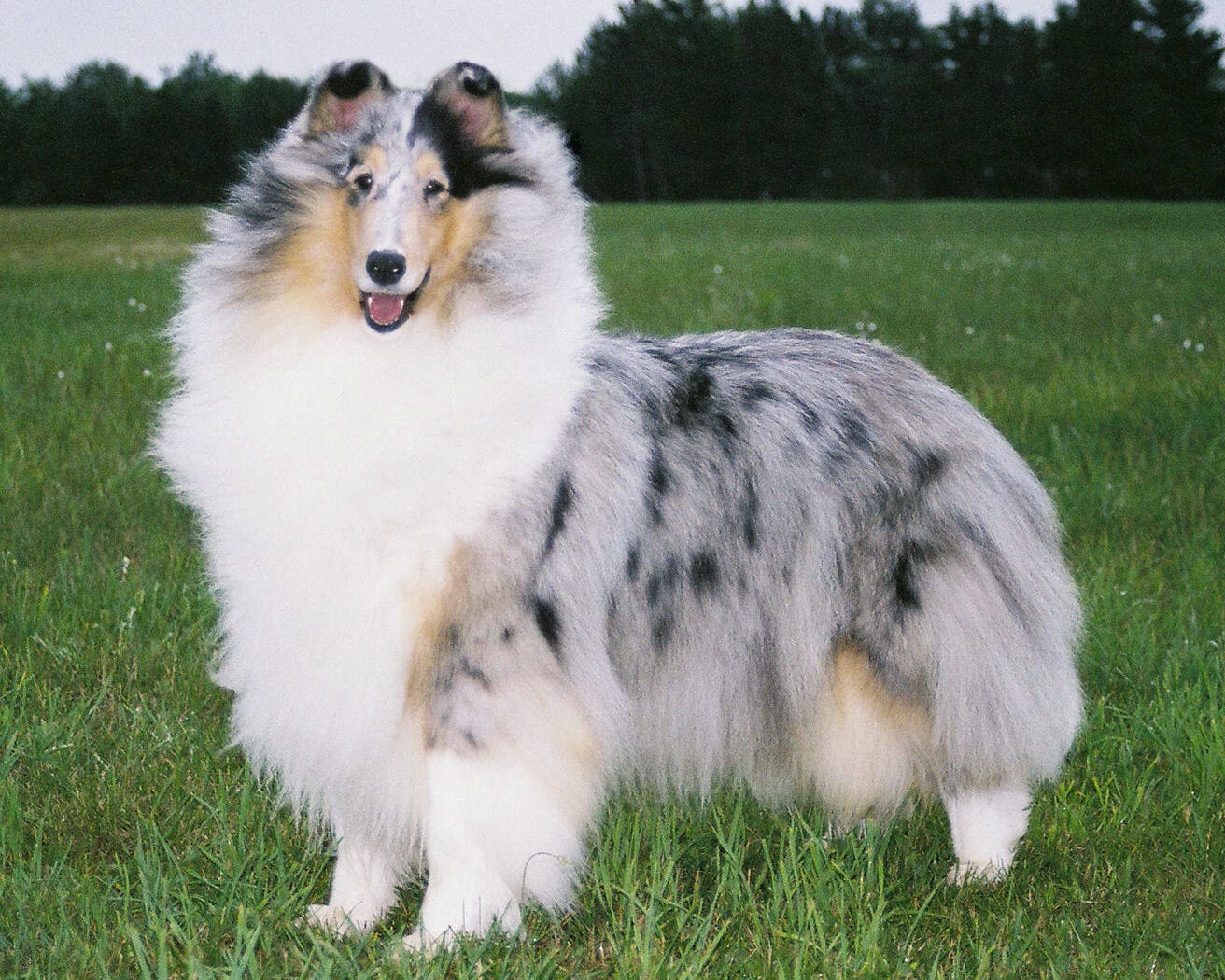
Rough Collie & Smooth Collie Coat Colors
Collie coats come in several colors. The color patterns are identical, regardless if they occur in a rough coat or smooth coat variety. While it can be challenging to recognize a rough Collie from a Smooth Collie at birth, their colors are apparent, and a Collie puppy’s markings really will not change much through life.
The Official Collie Standard recognizes four basic Collie colors; however, there can be considerable visual variations in each. The AKC Standard gives no preference between the colors, but the desire is for bright, rich coloring, regardless of the color pattern. While some colors and markings may appear similar to those found in other dog breeds, they really are unique to the Collie. The lone exception is the Shetland Sheepdog, or Sheltie, which shares Collie coat colors.
Below are the Collie Coat Colors recognized by the American Kennel Club:
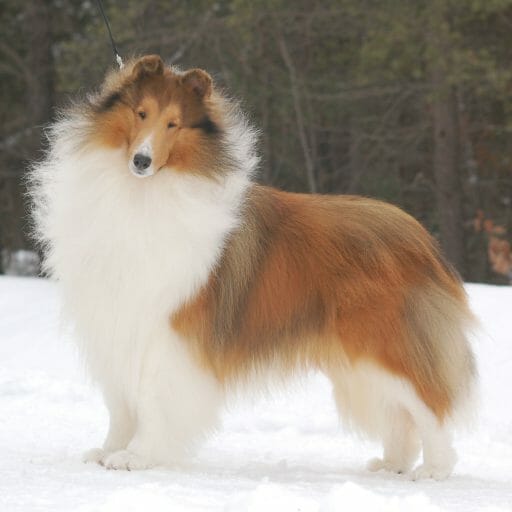
Sable:
The traditional “Lassie” coat color, the sable can range from a blonde “buff” color to a rich red to deep mahogany brown. In Collies, the “brown” gene is dominant. A sable that inherits a single tri-color recessive gene is called a tri-factored sable. These sables are generally darker in color. A sable’s coloring often darkens with each coat. All sables have the distinctive white markings of the Collie on the legs, tail tip, and white collar.
Faults: Muddy, drab, or straw-colored
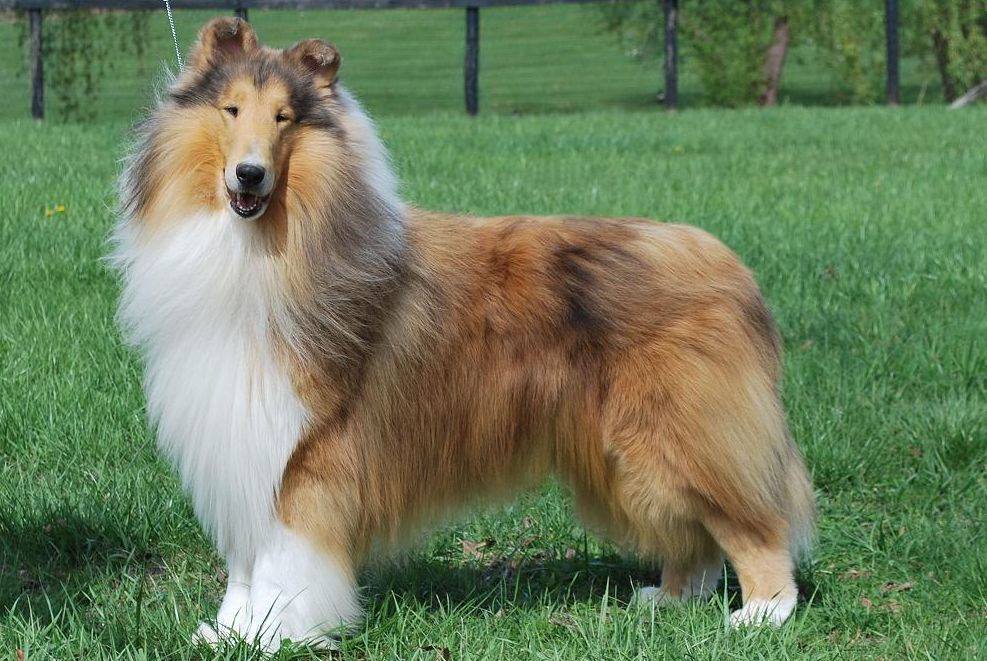
Sable Merle: A Sable who inherits a merle gene from one of its parents is called a Sable Merle. The Sable Merle will typically have a lighter sable coat color, and faint modeling, merling, or speckling may be visible. The merle markings often fade with age, and a Sable Merle may become indistinguishable from a Sable in time. A Sable Merle can also have blue eyes – a sure indicator of the merle gene. While the AKC classifies the Sable Merle as a Sable, breeders recognize it as a separate color and breed it accordingly. What was a controversial color in years past may be the most beautiful of all Collie colors.
Faults: Muddy, drab, or straw-colored
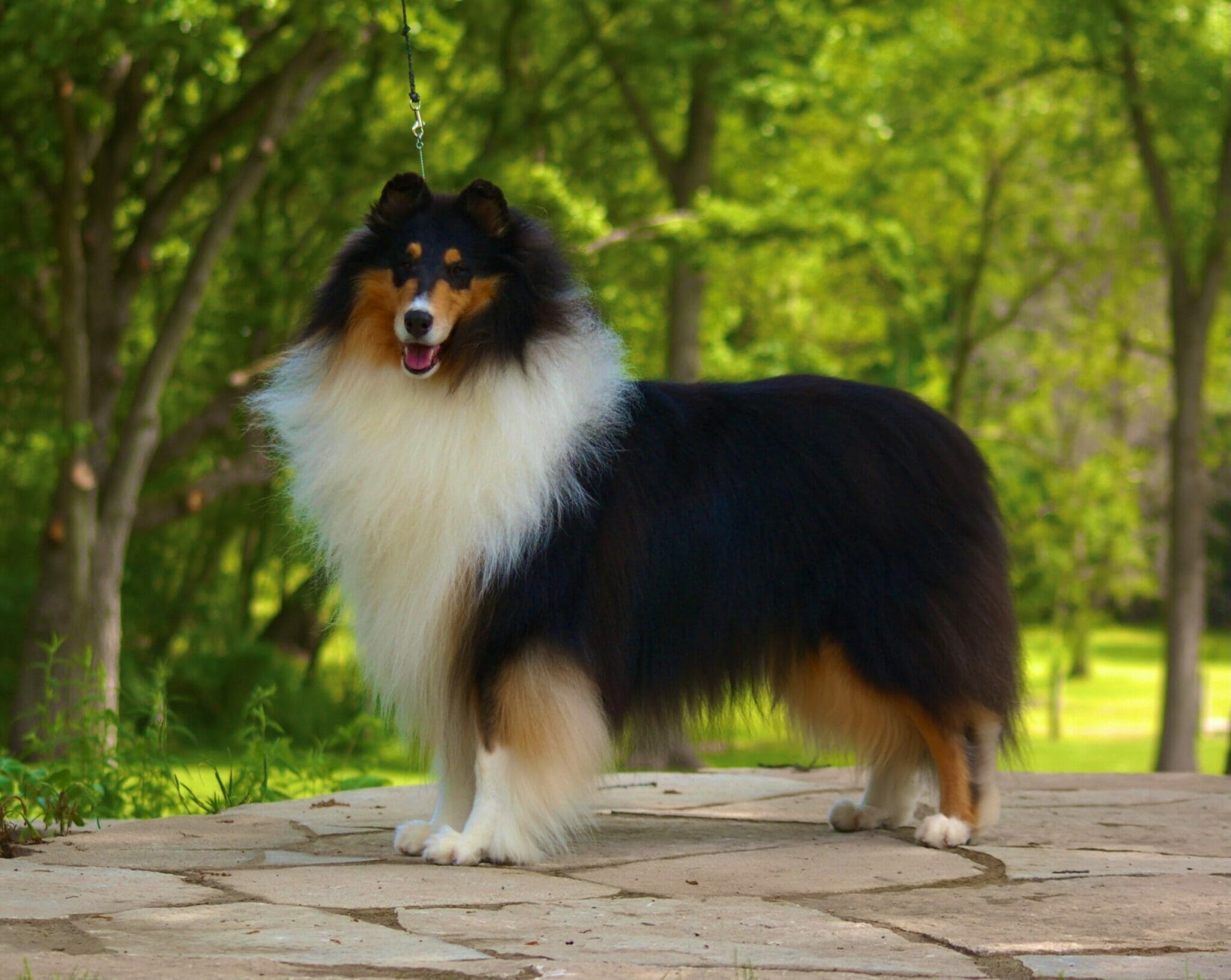
Tri-Color:
A visually impressive, predominantly black coat with tan markings on the face and legs. The color pattern is similar to the Doberman, but with the distinct white Collie collar, legs, and tail tip. The tri-color gene is recessive and needs to be inherited from each parent in order for this color to appear.
Faults: Rusty, browned or faded black
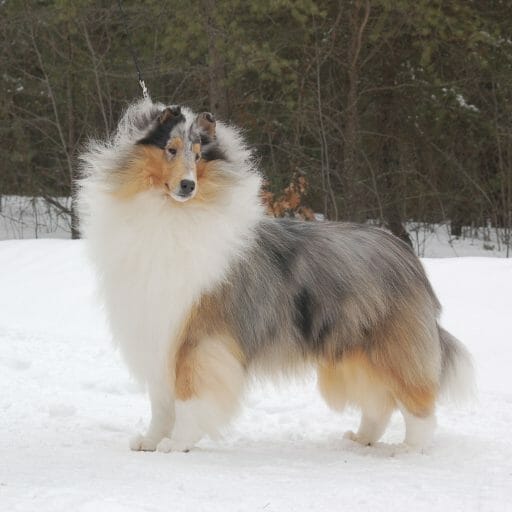
Blue Merle:
The Blue Merle is a genetic Tri-Color that inherits a merle gene from one parent. With the same color pattern as the Tri-Color, the merle dilution gene acts upon only the black coat, changing it to a distinctive blue/grey modeled pattern with varying black splotches. The finest blue coats are a clear, crystal blue color. Both the dark grey and “white ice” harlequin colors commonly seen are variations away from the ideal. Blue merles have the same tan markings on the face as the Tri-Color and the distinct white collar, legs, and tail tip.
Faults: Rusty, muddy, steely, maltese, or harlequin
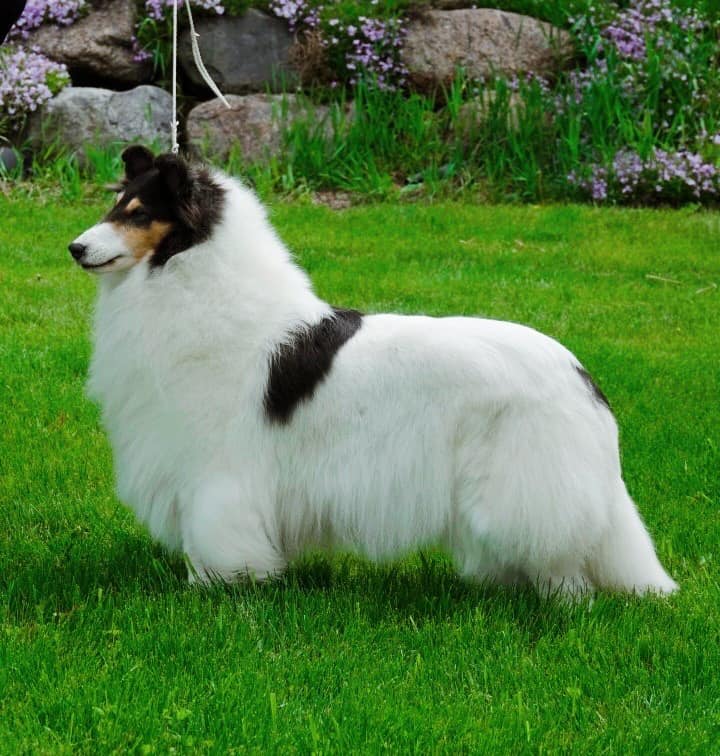
White:
White is the rarest color in the Collie breed. It occurs in combination with Sable, Sable Merle, Tri-Color, and Blue Merle colors, but it is recognized as its own color. The White Collie will have a normally marked head, but most of the body will be white. Body spots may occur. The white gene is recessive, requiring it to inherit it from both parents. When a Collie inherits the white-factored gene from both parents, it becomes a White, even if neither parent is. Collies that inherit only one white gene are called white-factored and typically have an increased amount of white on the collar, legs, and face. White-factored Collies are particularly visually impressive.
While White Collies have been a part of the breed for many years, they were typically of low quality. However, great strides have been made in recent years, and the best White Collies will rival the best Collies of any color. However, White remains the rarest color in the breed, and high-quality Whites are extremely prized.
Faults: Yellowed white, washed-out, or degenerate body spot colors; or body spots exceeding more than 50% coat color.
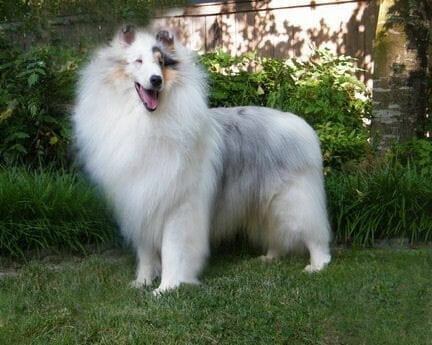
White Merle: A Collie who inherits a merle gene from both parents is referred to as a White Merle (also, double merle, double dilute, or homozygous merle). However, a White Merle is NOT a merle-headed White, but a merle. Due to the dominant dilution genes’ effect, a White Merle is almost completely white, including its head and face. A White Merle can have hearing and vision impairment (separate from Collie Eye Anomaly or Progressive Retinal Atrophy). Because of this, Collie breeders are generally not advised to intentionally breed two merles.
For more information on Collie coat colors and variation, please read this article from the Collie Health Foundation.